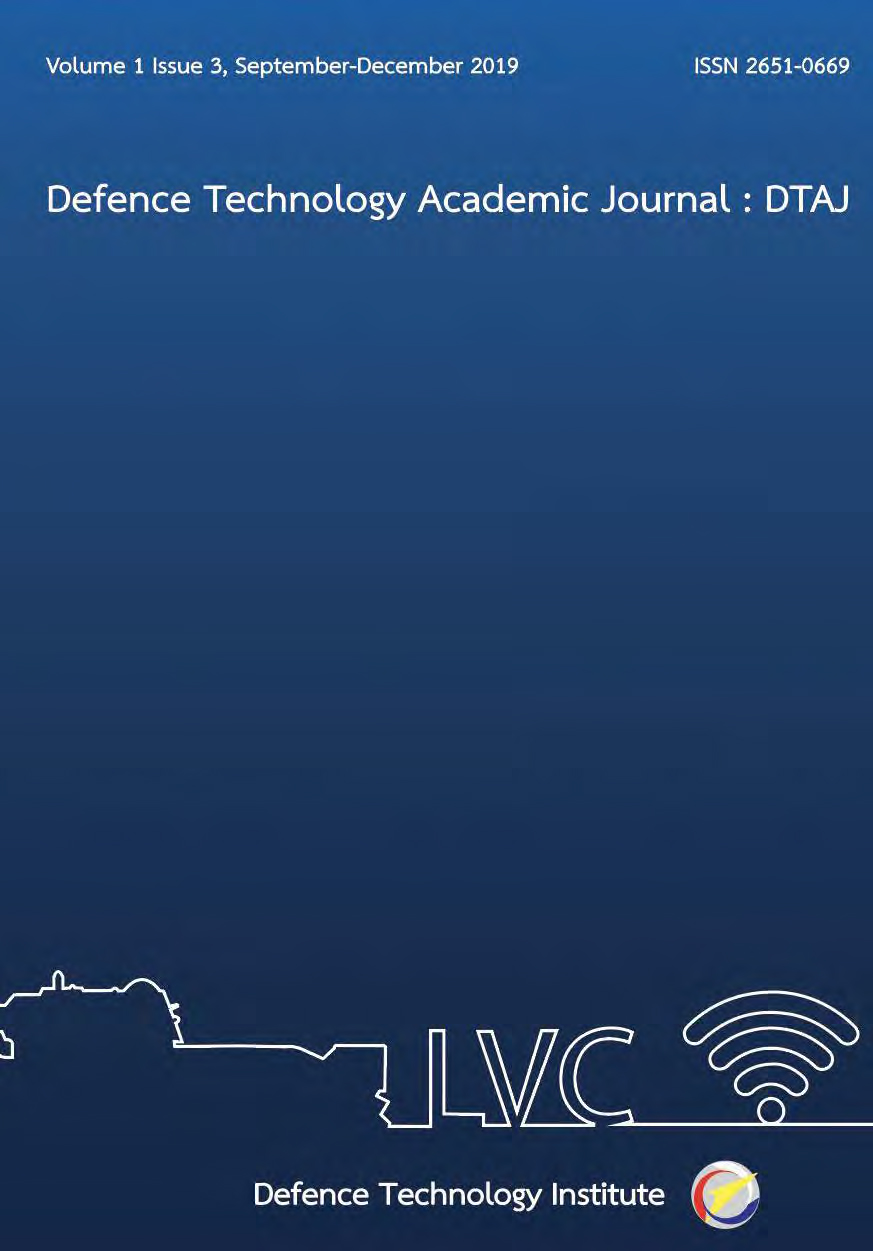The Prediction of Particulate Matters 2.5 Micron (PM2.5) Concentration using Geographic Weighted Regression Modeling in Nan Province
Main Article Content
Abstract
This study has the main objective to study prediction of Particulate Matters 2.5 micron (PM2.5) with Geographic Weighted Regression Modeling: GWR in Nan Province. The study had analyzed the relationship of concentration of PM2.5 from ground-based station in March 2018 together with influencing factors that were hotspot from VIIRS of NASA Suomi NPP satellite and humidity from the same such station. The study had determined these factors using predictive analysis with mathematic equation from Geographic Weighted Regression. Result model had a coefficient of decision (R2) of 0.893832, meaning that the model has very good relationship for prediction of PM2.5 concentrations in the study area. In model validation of this model, it was the comparison of predictive PM2.5 concentration data from the model and PM2.5 concentration data from ground-based station of the Pollution Control Department at 36t Station, Muang District, Chiang Mai Province. The result of evaluation was 89.23 percent, which is considered to be a high prediction accuracy.
Downloads
Article Details

This work is licensed under a Creative Commons Attribution-NonCommercial-NoDerivatives 4.0 International License.
Journal of TCI is licensed under a Creative Commons Attribution-NonCommercial-NoDerivatives 4.0 International (CC BY-NC-ND 4.0) licence, unless otherwise stated. Please read our Policies page for more information...
References
U.S. Environmental Protection Agency. (2014). Ari Quality Index. Retrieved July 7, 2017, from https://www3.epa.gov/airnow/aqi_brochure_02_14.pdf
กรีีนพีช. 2560. มลพิษฝุ่นละอองขนาดเล็กไม่เกิน 2.5 ไมครอนของเมืองในประเทศไทยช่วงเดือนมกราคม- มิถุนายน พ.ศ. 2560. เข้้าถึึงที่ http://www.greenpeace.or.th/s/right-to-clean-air/PM2.5-in-Thailand_Jan-Jun2017.pdf
กรมควบคุมมลพิษ. 2560. รายงานสถานการณ์มลพิษทางอากาศของประเทศไทย ปี 2560. กรุงเทพฯ: กรมควบคุมมลพิษ. กระทรวงทรัพยากรธรรมชาติและสิ่งแวดล้อม. หน้า 15-19.
จิระ ปรังเขียว และคณะ. 2551. การประยุกต์ใช้ข้อมูลดาวเทียมและระบบสารสนเทศภูมิศาสตร์ในการศึกษาวิเคราะห์ความสัมพันธ์ของพื้นที่ไฟป่ากับการเกิดมลภาวะทางอากาศ ในพื้นที่แอ่งเชียงใหม่-ลำพูน (รายงานการวิจัย). เชียงใหม่: ศูนย์เทคโนโลยีอวกาศและภูมิสารสนเทศ (ภาคเหนือ) มหาวิทยาลัยเชียงใหม่.
Wang, C. and et al. (2013). Air Quality Evaluation on An Urban Scale Based on MODIS Satellite Images. Atmospheric Research. 2013 (132-133), pp. 22-23.
ศูนย์เครือข่ายการจัดการคุณภาพอากาศของประเทศไทย. 2561. กรุุงเทพฯ: คณะวิศวกรรมศาสตร์ จุฬาลงกรณ์มหาวิทยาลัย.
อริศรา เจริญปัญญาเนตร พลภัทร เหมวรรณ และ มาลัยรัตน์ สว่างรัตนกุล 2560. การตรวจหาฝุ่นละอองขนาดเล็กกว่า 2.5 ไมครอน (PM2.5) ด้วยข้อมููลดาวเทียม TERRA/AQUA ระบบ MODIS พื้นที่ภาคเหนือตอนบน. (รายงานการวิจัย). เชียงใหม่: ศูนย์ภูมิภาคเทคโนโลยีอวกาศและภูมิสารสนเทศ (ภาคเหนือ) คณะสังคมศาสตร์ มหาวิทยาลัยเชียงใหม่.
กรมควบคุมมลพิษ. 2561. ข้อมูลคุณภาพอากาศ. กรุงเทพฯ: เข้าถึงได้ที่ http://aqmthai.com/aqi_info.php
EARTHDATA. 2018. Active Fire Data. NASA: Accessed at https://earthdata.nasa.gov/earth-observation-data/near-real-time/firms/active-fire-data.


